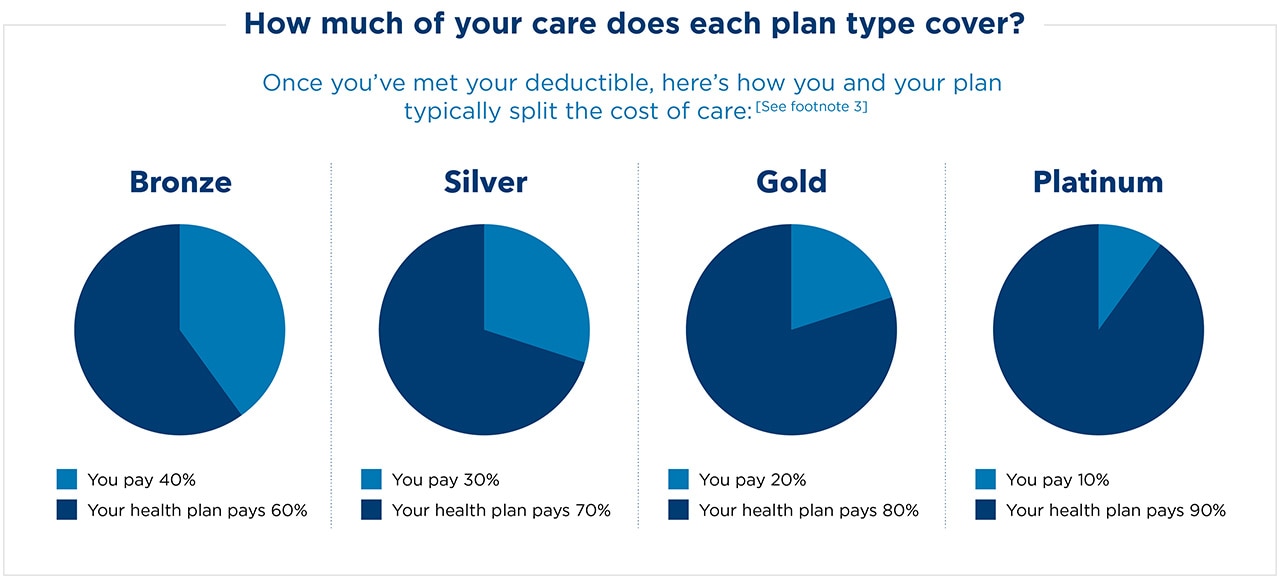Individual and Family Plans are organized into 4 coverage levels — also called metal tiers — getting to know them will help you understand what you are responsible for paying and which plan will best fit your health care needs.
It is important to understand that the metal tiers only reflect the difference in cost sharing, not the types of care we provide. You receive the same high quality Kaiser Permanente care in all of our plans.
Bronze ($): Lowest monthly premium | Highest deductible | Highest out-of-pocket costs for care
A good choice for healthy people who rarely see the doctor and want a low-cost way to protect themselves in case they occasionally get injured or sick.
Silver ($$): Moderate monthly premium | Moderate deductible | Moderate out-of-pocket costs for care
A good choice for generally healthy people willing to pay a little more each month to have fewer out-of-pocket expenses before your health plan starts covering the cost of care.
Gold ($$$): Higher monthly premium | Lower deductible | Lower out-of-pocket costs for care
A good choice for people with dependents and who use health care services regularly throughout the year.
Platinum ($$$$): Highest monthly premium | Lowest deductible | Lowest out-of-pocket costs for care
A good choice for people with known health issues who have frequent specialty care needs, tests, and prescriptions.




